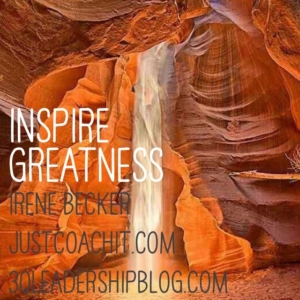Future-Ready Leadership – Enlightened Business
 Is it important to be a future-ready leader? Re-skill or learn 3Q skills that help you develop a new relationship with change that takes you forward faster and better. A new relationship that inspires the best in yourself and people. Will this new age of innovation usher in a new age of enlightened business where collaboration, innovation, and purpose-driven organizations thrive? Will you be ready?
Is it important to be a future-ready leader? Re-skill or learn 3Q skills that help you develop a new relationship with change that takes you forward faster and better. A new relationship that inspires the best in yourself and people. Will this new age of innovation usher in a new age of enlightened business where collaboration, innovation, and purpose-driven organizations thrive? Will you be ready?
Enjoy questions and answers around this topic. I think that the test of good information is that it is evergreen, and I believe with all my heart and my mind that the points discussed are more important AND relevant than they were in 2012 when I was interviewed by Dr. Amit Nagpal when you read excerpts from this interview. WHAT do YOU think? What do you agree with? Disagree with? What would you like to learn more about? Enjoy the Q & A and share your opinion on the blog!
Photo Credit: Getty Images
Dr. Amit: Tell us how we can create enlightened businesses. How can workplaces become more passion oriented?
Irene: Enlightened businesses will develop employee engagement through training, coaching, and initiatives that drive improved engagement and passion. Yes, workplaces must become more passion oriented, in that the workers, the managers, and the leaders must all be engaged and moving forward. We have a new generation that seeks meaning in their work, and we must have recognition in the workplace that meaningful work and employee engagement is critical.
Dr. Amit: What are the 3 most important points for 21st-century leadership?
Irene: Mission, Vision and Empowerment/Engagement
Dr. Amit: How do we ensure that our experiences do not become our baggage?
Irene: I think that the only way to ensure that our experience does not become our baggage is related to consciousness and perspective. Desire to grow, to learn, to evolve, to share and contribute fuel our potential. And, our ability to learn to see even the most difficult challenges we have faced as learning experiences that can not only take us forward but help us grow in ways we never thought possible, is critical. Instead of asking why is this happening to me, or getting stuck in the past, we must focus on what pearls of wisdom and experience we can take from the past, on learning that can help us create a better present and future.
Dr. Amit: Tell us about your REACH philosophy?
Irene: Effective leadership and communication are all about: Redirecting Empowering Actualizing Communicating and Harvesting.This is also the focus of great coaching. Let me explain
Great leadership and communication mean redirecting one’s efforts and attention and initiatives, actualizing potential, developing enhanced communication and collaboration (engagement) and harvesting the results.
Dr. Amit: How can we tap into collective intelligence?
Irene: I think there are many ways to tap into collective intelligence, many layers…However; in terms of organizations, the best way to tap into collective intelligence is to make learning part of the culture. I think that as we also see the global marketplace really expand, there will be a natural evolution of our collective intelligence as success is dependent upon transforming me to we. We must learn to work collaboratively, learn faster and do more for each other. In many ways, this has already started to happen.
Peter Senge spoke about the learning organization decades ago. What he referenced in the Fifth Discipline is still critical today. A successful organization is a learning organization, and today that means tapping into the collective intelligence through culture and initiatives that improve the learning ability of the organization and its employees.
Dr. Amit Nagpal: Irene, Tell us something about 3Q edge.
Irene Becker: The 3Q Edge™ refers to three critical areas of strength that I believe are important to life and leadership in the 21st Century.Areas of strength that can be developed/built using not only our potential but the challenges we face as catalysts for positive growth. Q1 IQ-Intellectual capacity under stress Q2 Emotional Intelligence Q3 Spiritual Quotient-our alignment to our highest power, our greatest values.
Click here to read the full interview
![]()
Anything else about Future-Ready Leadership. You Betcha!
Click here to read last week’s post: 7 Ways to Develop Future-Ready Leaders
Click here to read How Leadership is Changing in Today’s World John Mattone-Irene Becker

Irene Becker | Just Coach irene@justcoachit.com
 How can you build a better, stronger business in a marketplace where change, challenges, and hyper-competition will continue to accelerate?
How can you build a better, stronger business in a marketplace where change, challenges, and hyper-competition will continue to accelerate? 

